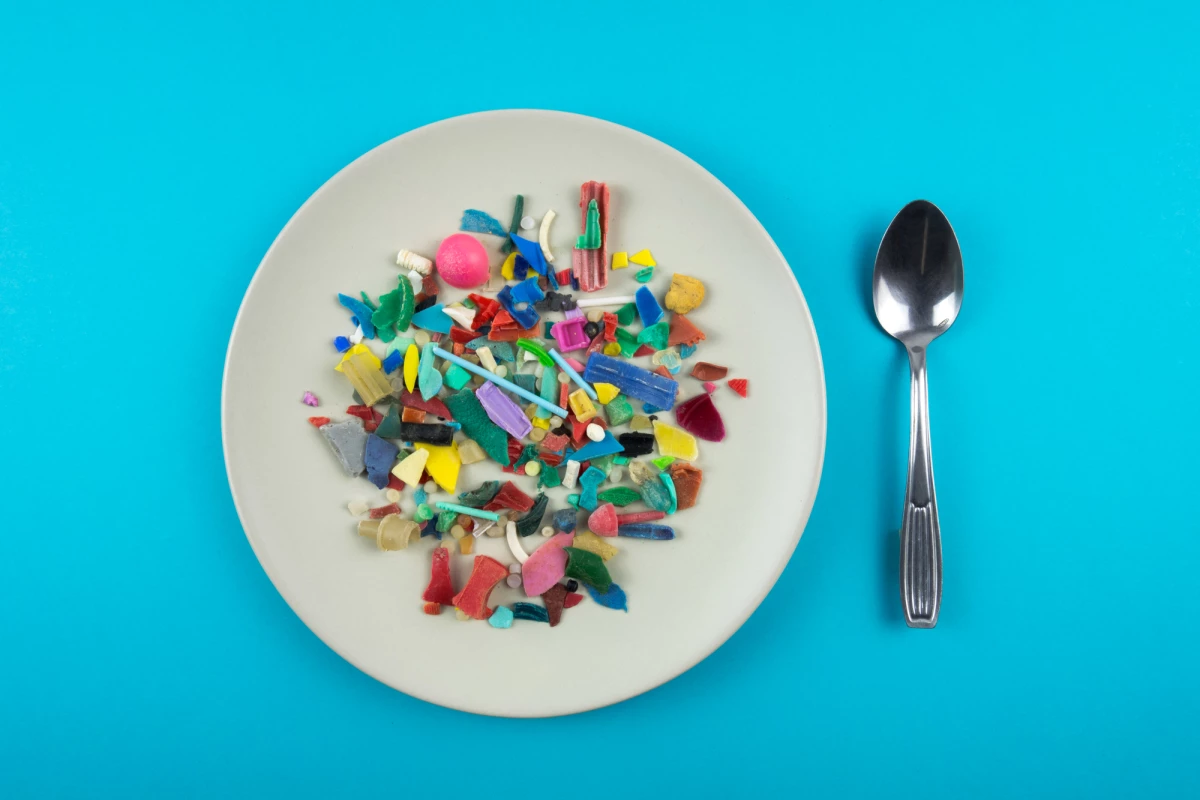A new study has found that, globally, micro- and nanoplastics and plastic additives are widespread across our food supply. While we have an understanding of how they get there, we don’t know a lot about their effects on human health, food safety and security.
The average person discards about 77 lb (35 kg) of plastic waste each year, which adds up to 303 million tons (275 million tonnes) globally.
Discarded plastic that ends up in the environment degrades into micro- and nanoplastic particles (MNPs). MNPs can be found pretty much everywhere, from remote mountain tops to arctic regions to the desert and deep ocean trenches. There’s been much research into MNPs since the early-to-mid 2000s, concerned with the potential dangers microplastics pose to human and environmental health.
A new study by CSIRO, Australia’s national science agency, is one of the first to analyze the available academic literature about microplastics and their effect on food safety and security.
There are many ways MNPs can enter the human food chain. The most well-known way is by a process called trophic transfer. Animals carry microplastics in their bodies, so when other animals eat them, the microplastics are ingested too and transferred up the food chain to humans.
But recently, food processing and packaging processes have been identified as a source of MNPs. Polyethylene cutting boards can contaminate meat with microplastics, packaged poultry has been found to contain polystyrene microparticles, and take-out food containers and plastic cups can release MNPs on first use.
“Fresh food, for example, can be plastic-free when it’s picked or caught but contains plastics by the time it’s been handled, packaged and makes its way to us,” said Joost Nelis, lead author of the study. “Machinery, cutting boards, plastic wrapping can all deposit micro- and nanoplastics onto our food that we then consume.”
The researchers considered past studies on MNP toxicity in human cells and model organisms. Some effects included mitochondrial dysfunction, inflammation, cell death, and toxicity in the heart, lungs and reproductive organs. Other studies showed that plastic nanoparticles can pass through the blood-brain barrier in fish and mice, causing brain toxicity.
“This is particularly concerning due to the ubiquity of MNPs, their presence in various sources of human food and the lack of regulation regarding MNP content and dispersion,” said the researchers.
They found that the issue of plastic additives leaching from MNPs into water, soil and animal tissue is under-researched. Plastic additives are chemical compounds blended with polymers during production to, for example, improve flexibility or protect against UV radiation. There were substantial information gaps about the properties of these substances and how often they are used.
Diverse microbes can attach themselves to plastic particles, forming colonies that can be transferred through the environment from wastewater to the human gut, affecting food safety. Moreover, studies have shown that MNPs can lead to antibiotic resistance.
Currently, no definitive studies demonstrate the harm to humans caused by MNPs. But, given the overwhelming presence of microparticles globally, including in our food, the CSIRO team is calling for more studies into the effects of plastics and plastic additives on food safety and security.
“The key missing information is determining safe levels of microplastics,” Nelis said. “We currently don’t know exactly what the microplastic flux through the food system is or which levels can be considered safe.”
In the meantime, the researchers say, people can do their part to reduce MNPs entering the environment. Less frequent use of washing machines is one way. Over 700,000 microfibers containing microplastics are estimated to be released from synthetic clothing during an average 13 lb (6 kg) wash cycle. Another way is to use fewer plastics in the kitchen when preparing and storing food.
The study was published in the journal TrAC Trends in Analytical Chemistry.
Source: CSIRO





